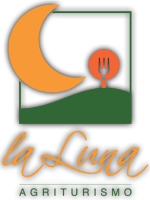The History
The La Luna holiday farmhouse is nestled in a valley rich with history and tradition.
The most ancient populated nucleus of the area is Spescia, which owes its name to the Latin specus, or “hidden place”. The first traces of ceramic artifacts, according to Domenico Mambrini, date back to 3,000 years before Christ, while the first written records were found in 1142. These lands are also spoken of in the Annals of the Camaldoli monks (1330) and in the Description of Cardinal Anglico de Grmoard (1371). A place situated along borders and a passage-way between the regions of Romagna and Tuscany for bandits, outlaws, smugglers, and deserters, the Castle of Spescia little by little lost its importance with the onset of fire arms, and was passed down to the Nanni household first and then to the Gentili Counts, to whom the chapel still belongs nowadays.
In 1404, the lands fall into the hands of the Republic of Florence, which takes the Castle away from the local feud lords and creates a small town ruled by the family heads and aggregated to the podesteria or town governance of Galeata until May 9, 1811, when the towns were suppressed by Napoleon with the institution of the independent municipality of Santa Sofia. Today, the ancient Church of Spescia dedicated to saints Fabiano and Sebastiano, has been transformed into a private home.
There is record of a hospital for pilgrims and the poor in Camposonaldo remembered in the 600’s. Here, the Naldini family opens a factory for sericulture and countless farms, from Monterosso to Montebianco, to Calci, to the Orsetti, to Gorgamaggio a Poggiolino, to St. Vitale and, quite naturally, to the Spini, which is nowadays a modern and cozy holiday farmhouse. The old roadways of the municipal mule track have its brief moment of notoriety when the Duce Mussolini, accompanied by his under-secretary Leandro Arpinati, by the podestà (during the fascist regime in Italy, a head of town appointed by the central government in Rome) of Santa Sofia, Rodolfo Giorgi, and by other municipal authorities. On August 18, 1929, Mussolini, captured in a photographic snapshot treasured by Master Ezio Fabbri, reaches the area on foot to witness the military maneuvers under way in Montebianco – Monterosso, which included artillery firing sessions toward the Rondinaia. The new municipal road is inaugurated ten years later, on August 20, 1939. In those years, the Spini farm is part of the huge property holdings of the Pagani household and, in particular, of engineer Filippo Pagani, who owned over 40 farms in Romagna and Tuscany, all of which share a common trait: the red bricks with which the homes are plastered.
Illuminated by a spirit keen on technical-scientific progress, the engineer introduces agricultural machinery in his companies to accurately work his lands, and opens a philately in which 40 women of the area find occupation. Nominated Podestà (Head) of the town in 1931, he moreover displays considerable administrative skills: in fact, during his mandate, works are commenced to construct the aqueduct of Spinello, the road to Camposonaldo, to reconstruct the aqueduct between the municipalities of S. Sofia, Galeata, and Civitella, and leases are granted to reconstruct the cemeteries of the capital and the hamlets devastated by the earthquake of 1918.
After having been worked and inhabited by the Gelmetti, Bardi, and Batani families over the last few years, the Spini are now ready to become one of the most modern tourist hospitality locations in all of upper Bidente.
Written by Oscar Bandini and Ezio Fabbri



